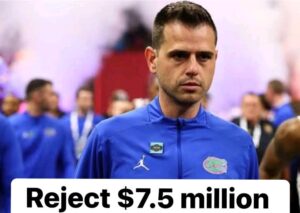
Vanderbilt University Medical Center Eliminates DEI Programs Amid Federal Pressure

Vanderbilt University Medical Center (VUMC) is undergoing significant changes to its diversity, equity, and inclusion (DEI) initiatives in response to recent federal directives. These developments have ignited a national conversation about the role and future of DEI programs in academic and medical institutions across the country.
Federal Directives and Institutional Response
In January 2025, President Donald Trump issued a series of executive orders targeting DEI programs across federally funded entities. These orders characterize certain DEI efforts as forms of “illegal discrimination or preferences” in hiring, admissions, and organizational practices. As a private institution that receives federal research funding, VUMC is obligated to comply with these directives.
In response, VUMC has systematically scrubbed DEI-related content from its public websites. Terms like “health equity,” “social justice,” and “microaggressions” have been removed or replaced. In addition, the Student Center for Social Justice and Identity has been renamed the Student Center for Belonging and Communities, a shift reflecting the new federal compliance approach while still aiming to support students’ sense of inclusion and community.
Allegations of Concealment
Despite these public-facing changes, VUMC has come under fire from conservative watchdog groups such as Consumers’ Research, who allege that the institution is continuing DEI efforts behind closed doors. Reports claim that DEI training materials, including sessions on implicit bias and anti-racism, remain available but are now housed on password-protected internal platforms.
Critics argue that this move indicates an attempt to circumvent the federal directive without fully dismantling DEI infrastructure. However, VUMC has defended its actions, explaining that restricted access to certain materials is a standard security measure. A spokesperson stated that internal training tools and educational resources are often protected to ensure data integrity and the privacy of participants.
Financial Implications
The ramifications of these federal directives extend beyond ideological disagreements—they carry significant financial consequences. The National Institutes of Health (NIH) has implemented policies to reduce or eliminate indirect cost reimbursements for institutions found to be out of compliance. For VUMC, this has resulted in a drastic reduction in its indirect cost recovery rate—from 75% to 15%.
This change could impact an estimated $71 million in federal research funding, straining the medical center’s ability to support infrastructure, administrative needs, and research overhead. For an institution that has long prided itself on cutting-edge research and innovation, the financial pinch could slow progress in key areas of medical discovery and treatment.
Institutional Commitment to Equity
Despite these challenges, VUMC insists that it remains committed to creating an inclusive and supportive environment for its patients, students, and staff. While public expressions of DEI have been scaled back to align with federal law, the institution has made it clear that it will continue fostering diversity and belonging within the boundaries of current regulations.
Internal programs are reportedly being restructured to emphasize community engagement and wellness, rather than relying on traditional DEI terminology. VUMC leadership has framed this as an evolution rather than an abandonment of its mission, emphasizing that the core values of respect and inclusivity still underpin the institution’s culture.
Broader Implications
VUMC’s actions are reflective of a wider trend among universities, hospitals, and research institutions grappling with the implications of the federal crackdown on DEI initiatives. These developments are forcing organizations to reconsider how they promote equity and representation in an increasingly polarized political climate.
This shift raises difficult questions: Can institutions still support diversity without running afoul of federal mandates? Is it possible to achieve meaningful inclusion without explicit DEI language and frameworks? For many, VUMC’s situation may become a bellwether for how other institutions navigate this new reality.
As the debate continues, VUMC finds itself at the center of a national conversation about what inclusion looks like in a post-DEI regulatory landscape—and how far institutions are willing to go to preserve their values in the face of legal and financial pressure.





